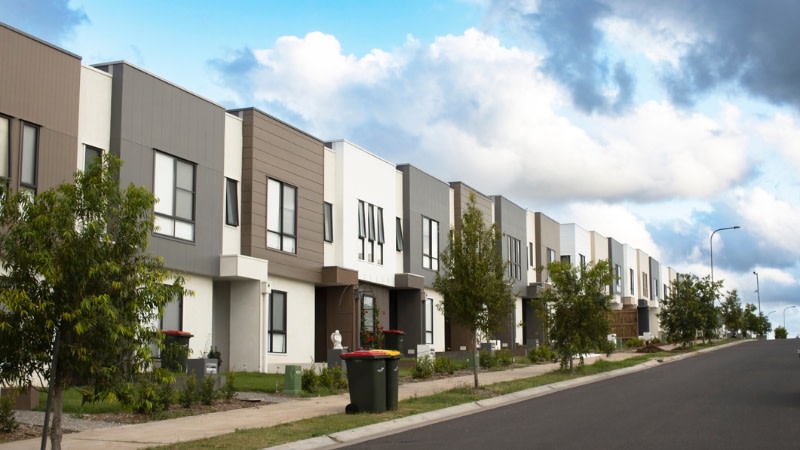Nation’s New Home Loans Tumble 3.7pc

Seven cash rate rises in a row has dug into the property market with the latest data showing the decline in value and number of new home loans has picked up pace.
According to ABS Lending Indicator data for November 2022, new loan commitments, in seasonally adjusted terms, fell 3.7 per cent to $24.7 billion off the back of a 2.8 per cent fall in October.
This is 24.3 per cent lower than the previous November.
Owner-occupier housing fell 3.8 per cent to $16.4 billion, 24.8 per cent lower compared to a year ago, while investor housing was down 3.6 per cent to $8.3 billion, 23.2 per cent lower than 2021’s figure.
ABS Finance and Wealth head Katherine Keenan the falls followed rises in May, attributed to a clearing of application processing backlogs by lenders.
“Even with the June falls, the value of new owner-occupier loan commitments remained 50 per cent higher than the pre-pandemic level in February 2020, and the value of new investor loan commitments remained 101 per cent higher,” she said.
Construction finance fell 62.1 per cent, after a rise of 66.6 per cent in October. Loans for the purchase of property fell 0.7 per cent, after a fall of 4.1 per cent in October.
These series can have volatile month-to-month movements in seasonally adjusted terms as they are strongly affected by small numbers of high-value loans, the ABS said.
In November the number of new loan commitments for owner-occupier first home buyers nationally was down 5.5 per cent to 8023, after a 3.3 per cent decline the previous month. This was 50.7 per cent below the January 2021 high of 16,261.
BIS Oxford Economics senior economist Maree Kilroy said that while new home lending was falling, refinancing continued to climb, reaching a new record of $13.4 billion as more households rotate off fixed term loans and lenders competed for these borrowers.
“Property turnover is falling and stock on market is rising,” she said.
“We are also seeing new property listings decline as potential sellers hold back.
“This is especially evident in Sydney, Melbourne and Brisbane which have witnessed the strongest price falls to date. New listings are expected to remain soft throughout the first half of 2023.”
Kilory said that with the unemployment rate expected to remain low, the impetus for forced selling was limited.
“We anticipate fewer new listings to increasingly help stabilise house prices and see the September quarter representing the bottom in house prices, with turnover beginning to improve soon after,” she said.

HIA econiomist Tom Devitt said the data showed there had been just 5057 loans for the construction or purchase of new homes in November, the weakest month since June 2013.
“Investors and owner-occupiers, alike, are retreating from the market,” he said.
“This contraction in lending occurred before the RBA increased the cash rate in December and we expect an ongoing decline in lending as the full impact of the increase in interest rates flows through to households.
“There are long lags inherent in this cycle and the full impact of the increase in the cash rate in 2022 will not be observed until late in 2023.”
Canstar said its analysis showed borrowing power has fallen by almost one quarter (24 per cent) since April.
“A solo purchaser with an average income of $92,030 has seen their borrowing power reduced by $135,000 since April,” a spokesperson said.
“A couple with a dual income of $184,060 has had their borrowing power reduced by $312,000 during the past 10 months.”
The impact of rising interest rates and higher loan repayments has severely impacted all borrowers, Canstar said, with its analysis showing borrowers faced a 38 per cent increase in home loan repayments from May to November, adding more than $800 to repayments on a $500,000 loan over 30 years or more than $1600 for a $1-million loan.
The additional cash rate rise in December saw these figures blow out to an increase of $888 for a $500,000 loan or up to $1778 for a $1-million loan.
The combination of higher loan repayments and reduced borrowing power was having the desired impact the Reserve Bank wants for the property market, Canstar group executive Steve Mickenbecker said.
“Reserve Bank rate increases are doing their job in slowing new lending and stalling the property market, with November lending down by 21.3 per cent from April,” he said.
“Slower lending is yet to flow through to lower inflation and the 7.3 per cent inflation rate for the year to November will have disappointed the Reserve Bank, making a further 0.25 percent increase in the cash rate likely in February.”














